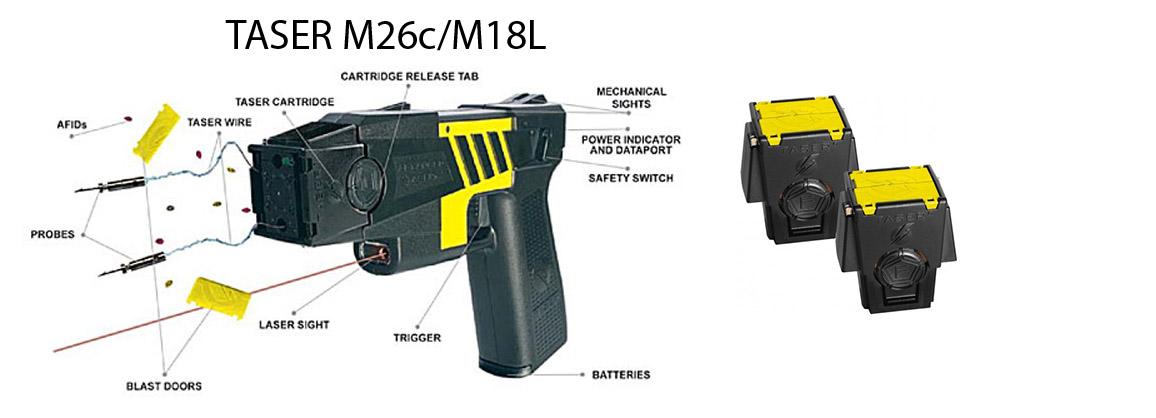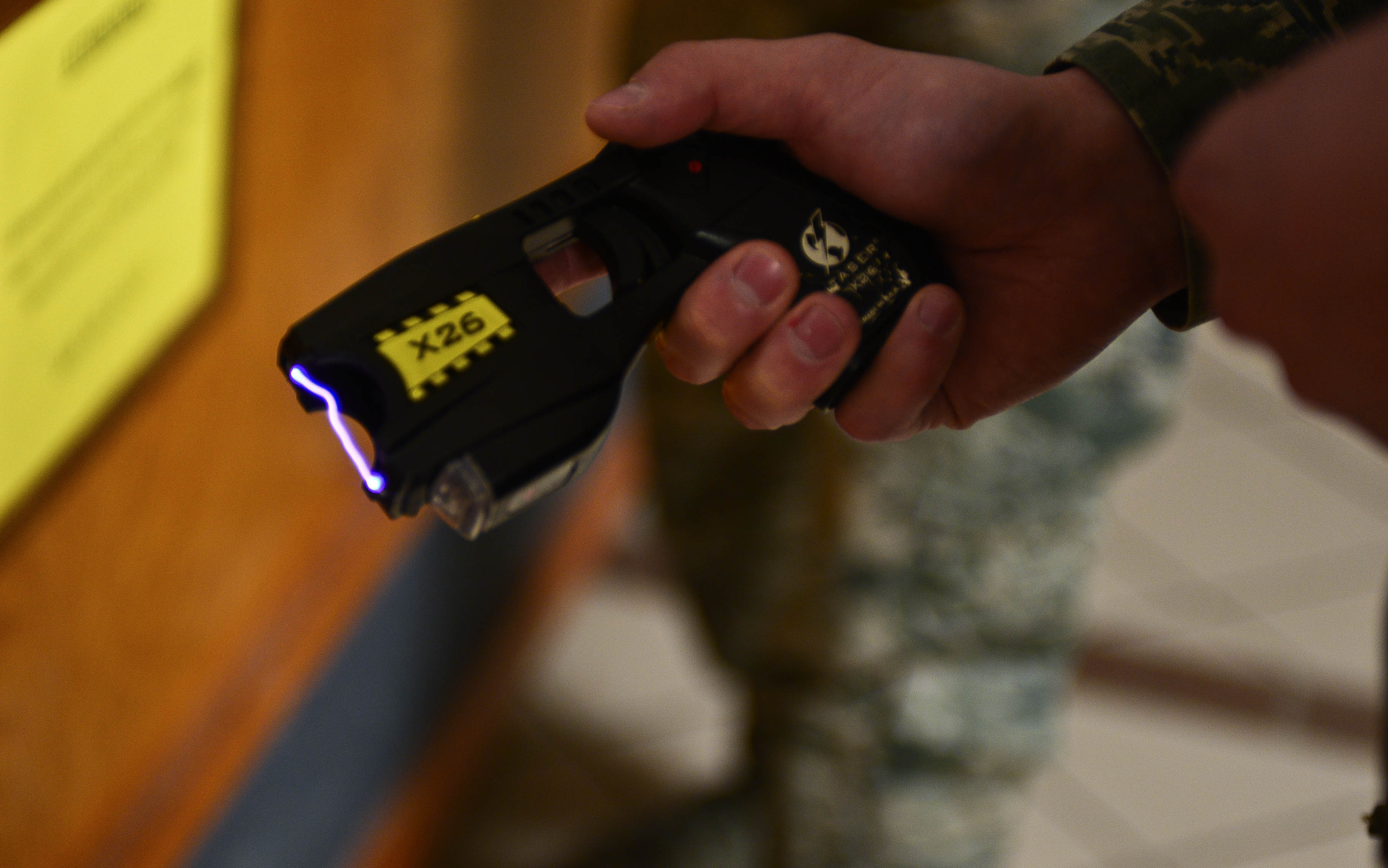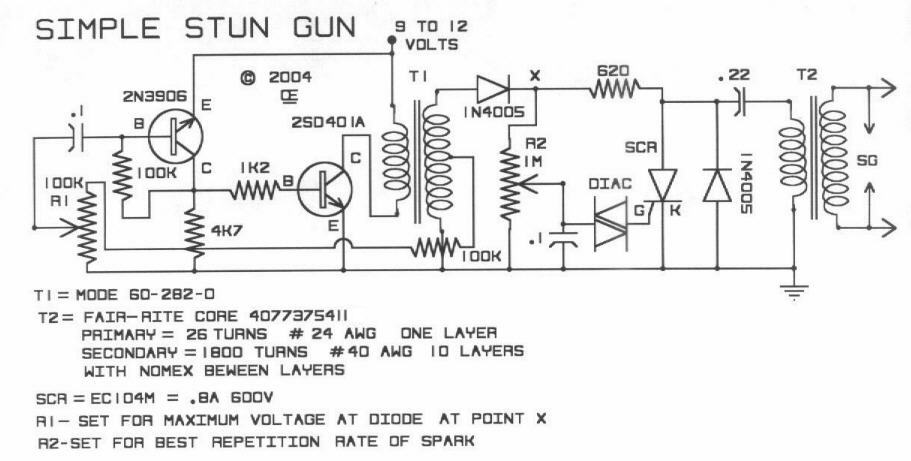Electroshock

Breakdown of the
M26c/M18L Taser
Tasers and stun guns are another
common less than lethal weapon that are also very
popular with police, military, and security
professionals alike. This is primarily due to their
low skill requirement and safety compared to other
less than lethal methods.

US Airman demonstrates testing a
taser
So, how do they work? Well,
first, one must have a basic grasp of Ohm's
Law:
V = IR
As well as a basic understanding of how the
brain communicates with the human body.
As most of us would learn in high school
biology, the brain uses electric signals to
send instructions and receive information from
the body. By inducing an electric current of a
different frequency and magnitude on the body,
the nervous system will essentially be
overloaded and cause significant pain in the
target. However, no actual bodily harm is
induced, save for those with extenuating
medical circumstances. This is because the the
voltage, while extremely high and in the range
of tens of thousands of volts, the current is
kept extremely low, within the realm of 3-4
miliamps.
20,000 v = 0.003 A * R
So obviously, the resistance in the curcuit
must be very high, right? Not quite. By
utilizing several transformers, which induces
current on a loop that is not otherwise
connected to the primary circuit while also
adjusting voltage, in this case increasing it,
a high voltage-low current circuit is able to
be constructed.

An example of a stun gun
circuit by P. Marian from ElectroSchematics.com
This
high voltage-low current circuit sends
electricity between two electrodes, which
is then applied to a target, ideally
pacifying them in the process. It is
critical that the electrodes make good
contact in order for the weapon to be
effective. This is the biggest problem
with most electroschock type less than
lethal weapons.
One approach to combating this issue is
having the electrodes be two gas propelled
prongs which enter the target. It is still
considered less than lethal because the
prongs are constructed of a material that
is not meant to fragment or deform upon
entering the target. A great example is
the picture at the top of the page:

While this does solve the issue to a
degree, its not a perfect solution. Since the prongs
have limited range due to their mass and velocity, if
the target is wearing too much clothing or loose
clothing, the prongs could easily get tangled or
outright fail to enter the target. Since the circuit
isn't complete, as well as the higher resistance of
fabric which also prevents proper electric flow, the
weapon is rendered ineffective. Another issue is
length of exposure. If a person is subjected to an
electric current for too long, then risk of severe
injury increases exponentially, which requires a
significant amount of safeties built into the circuit
(relays, safety switches, PWM limiters, ect.) causing
the price to skyrocket.
|



